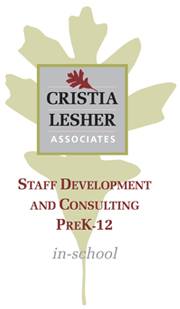How do I keep control of my classroom when I’m teaching with manipulatives? (Part 2)
Date: February 25th, 2016
By: Tom Schersten
 In the first part of my discussion about keeping control of my class while teaching with math manipulatives, I covered how I teach students to take their hands off the blocks within two seconds and give their full attention to me.
In the first part of my discussion about keeping control of my class while teaching with math manipulatives, I covered how I teach students to take their hands off the blocks within two seconds and give their full attention to me.
Once I’ve accomplished that, I need to consistently enforce (and reinforce) the expectation that every single student will do it every single time.
If I do not show absolute consistency in my enforcement, students will start to push the two-second limit, and they will start to believe that I am not totally serious.
Although I am indeed totally serious, I am not totally threatening. Instead, my enforcement will involve logical consequences, not punishment. Since using the manipulatives for math modeling is a privilege which most students value, the only consequence for failure to use the manipulatives appropriately is the temporary withdrawal of the privilege.
Here’s how the drama usually unfolds.
At some point during the class a student continues to build with the blocks when he or she is supposed to have taken their hands off of them. When this happens, and it will, I quietly look at them and patiently wait for them to notice that I’m no longer talking AND that I’m not talking because I’m looking at them still manipulating the blocks.
During the seconds before the person with their hands still on the blocks notices the sudden quiet, most of the rest of the class has now also focused on the person touching the blocks, having seen that that is where my focus is.
When the offender finally looks at me, I say, kindly, “Please take your hands off the blocks,” and then I add with a warm smile on my face, “Thank you for volunteering to help me show the other students how I manage my classroom.”
Believe me, at this point I have everyone’s complete attention. They are holding their breath. What is the teacher going to do next?
I remind the violator, “You did not take your hands off the blocks within two seconds. So I’d now like you to push your chair back from your desk and not touch the blocks when the other kids go back to using the blocks.”
In situations when the student involved seems reluctant to accept the restriction, I might add, “You are welcome to not push your chair back—IF you think you are able to not touch the blocks until you are INVITED to touch them again.”
I continue, always with kindness, “If you sit quietly and pay attention without touching the blocks for a short period of time, then you will certainly be invited to rejoin the group in using the blocks, but only when it’s time for the class to touch the blocks.”
I then turn to the rest of the class and say, “Aren’t you glad you weren’t touching the blocks when you weren’t supposed to? Aren’t you glad (name-of-offender) offered to show you how I operate my classroom?”
Of course they are, and so I suggest that everybody thank the offender. I then lead the class in politely saying, “Thank you, (name).” Suddenly, the person “in trouble” is a bit of a celebrity and becomes more relaxed about scooting back from the desk and blocks. The atmosphere is one of giving respect and inviting respect and is never adversarial or confrontational.
As a math consultant who travels to many states, I have taught countless demonstration lessons for teachers. I love it when I’m about to present a demonstration lesson in a classroom of students whom I have never seen before and the classroom teacher says, “We’ve got a real attention-seeker in this class. I’ll be curious to see how you deal with (name of a troublesome student).”
I ask for identifying information, such as the location of the student’s seat, so that I can quickly pinpoint the student and purposely construct my relationship with the student who seeks attention.
I want the attention I give to the troublesome student to be positive, so I plan for that outcome. Therefore, rather than waiting for the student to challenge my authority, I subvert the power struggle. I do this by nurturing a relationship of respect and trust, the foundation of any relationship that works.
This is a conscious choice for me, and it needs to be a conscious choice for you, if you want an outcome of compliance with your expectations. When we really commit to having relationships of respect and trust with our students, both giving and receiving, students respond in kind because that is the environment that we have established. We teachers set the expectations and the tone in our classrooms. We must always, always remember that.
Hence, I target this student, and I am immediately generous with acknowledgements and affirmations. One of my favorites is to say to them, “Thank you for looking in this direction because you will hear my next instruction the first time I say it.”
The student is very attentive during the beginning of the lesson because s/he is looking for recognition. I give it abundantly. For example, I might add, “I see you are trying to make the most of this opportunity. Thanks for showing other students how they might want to utilize this opportunity.”
Another chance to establish rapport with this student might be based on their apparel. I may comment on the student’s fashion sense by saying, “Nice outfit,” or whatever noun could follow “Nice.” Or I may acknowledge the theme of the T-shirt being worn. Anything that establishes a connection is a huge investment in the relationship.
Often this student will react quite positively to the introduction of manipulatives. I know that, in part, this is because I present them in such a kid-respectful way. But there’s more to it than that. Their enthusiasm is often because manipulatives call upon their Spatial and Bodily-Kinesthetic Intelligences. The odds are that most of their typical school day has called upon their Verbal-Linguistic Intelligence, and maybe that’s not where their strength is. (If you haven’t already, read Howard Gardner’s work on Multiple Intelligences. It will change your teaching life.)
Back to the conversation at hand, the logical consequence for not following instructions when using the blocks is the withdrawal of the privilege of using the blocks. I try not to show anger or annoyance, but rather kindness and compassion. All throughout I am firm in my expectation that all students will take their hands off the blocks in 2 seconds whenever requested. Most kids want to touch the blocks, and I have control of what they want, and only when I am willing to say so.
Conversely, some kids may NOT want to touch the blocks because they already know how to do the written math. I tell them, “Yes, the blocks are for learning the math, but they are also to show understanding of the written procedures by using the blocks to act out what is meant by the written symbols.”
For example, I need students to use base-ten blocks to explain regrouping in subtraction of whole numbers, making sure they understand what’s happening when they cross off a number and then write a new number. My students also need to be able to use pattern blocks to explain the written procedures for changing improper fractions to mixed numbers and mixed numbers to improper fractions. It’s no longer sufficient for students to memorize paper-and-pencil procedures as their parents were taught. (More about parents in a future blog.) The Common Core mandates understanding, which is demonstrated through math modeling with 2-D drawings and 3-D manipulatives.
Stay tuned for my next blog on the logistics behind the physical management of manipulatives. (If you’re not hyper-organized, you’re inviting a perfect storm!)

